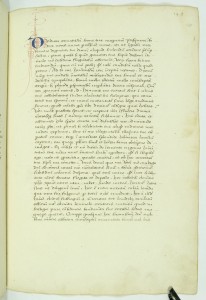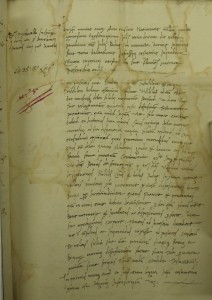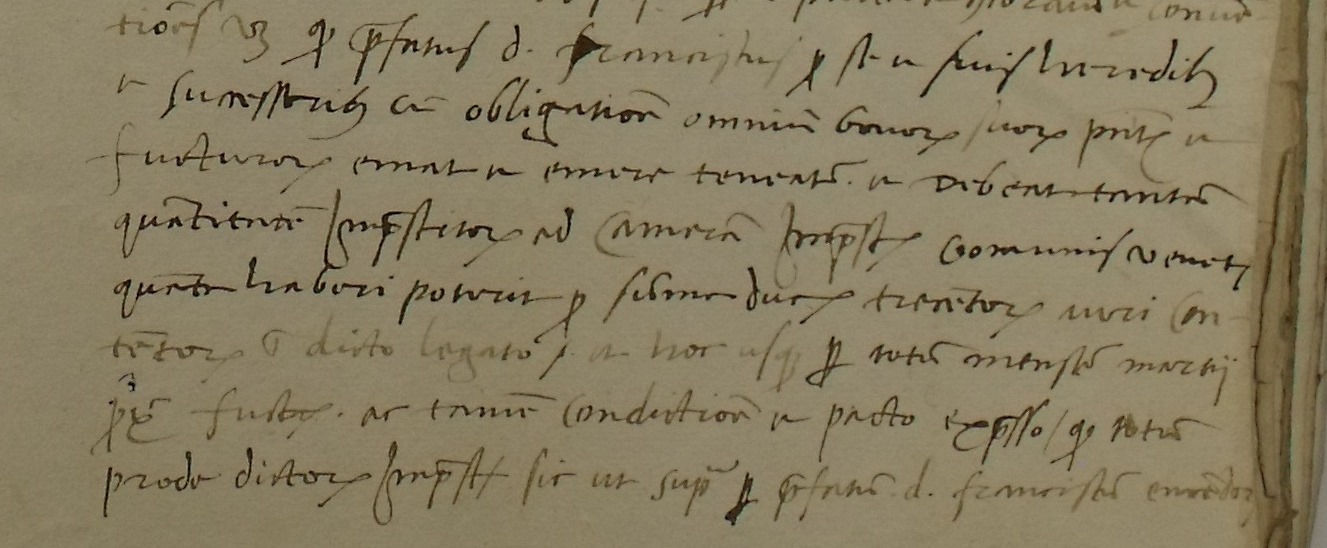This post was contributed by Dr Laura Jacobus, senior lecturer in the Department of History of Art.
Sitting at my desk squinting at indecipherable medieval documents, I’m suddenly transported to the near-future and the summer term at Birkbeck, when I’ll be sitting at my desk squinting over indecipherable exam scripts. Academics take research leave in order to refresh their thinking and inform their teaching, keeping up at the cutting-edge of knowledge, so that we can then deliver that to our students and to the wider world of scholarship. But from students’ point of view our disappearances may be less explicable. So I thought I’d write a bit about what I’m doing.
I’ve been using this term to pull together research that I began many years ago on the Arena Chapel in Padua. It’s a fourteenth-century building, with practically every surface decorated with stunning frescoes by Giotto. I have already published a book on it, but I’d found a great deal of material which was still of interest, and it didn’t belong in that book because it had nothing to do with Giotto. This term is an opportunity to pull that material out of the filing cabinet (yes, some of it goes back that many years) and try to make sense of it, getting an overview of what needs to be done and doing some of it.
Before my leave started I’d booked a two-week research trip to Venice and Padua, and over Christmas I planned that meticulously. I had nine different archives and specialist libraries that I wanted to visit, some of them with quite short and irregular opening times. As things turned out I only managed seven of them, and in one of those the specialist collection I needed to see wasn’t available, but this is quite a high success rate for a research trip, and I may be able to go back for a few more days before the end of my leave. And, I have to say, some of those libraries were a pleasure! I’m including a photograph (below) of one, the seventeenth-century library of the monastery of San Giorgio Maggiore, designed by Longhena and still with all its original furnishings. I was very lucky to be staying in a newly-opened research centre in the former monastery there, so this was my local library during my stay. Before anyone gets too envious, I should also say that one of the other libraries was in a below-sea-level 1960s basement. Still, there’s no denying that doing research on Italian medieval and renaissance art has its attractions.

The seventeenth-century library of the monastery of San Giorgio Maggiore, designed by Longhena and still with all its original furnishings
The trip to Italy allowed me to find and photograph around twenty documents that should help fill some of the gaps in my evidence, but first I have to read, transcribe, translate and edit them. I returned to London three weeks ago, and have spent much of the time since then doing just that. It will take many more weeks to do it (more weeks than I have leave), and I am including photographs of some of them so that you can see why. A few are rather beautiful – such as this copy of a letter from Maddalena Scrovegni, the first female humanist, to the Duke of Milan in 1389…
…but most are definitely not. This is the copy of her brother’s will, written at a time when the family had lost everything in 1435.
I’m interspersing the work on these transcriptions with drafting sections of the next book, treating one kind of work as a break from the other. It sounds like a messy process, and in many ways it is, but the shape of the book is gradually emerging from these parallel processes of thinking, writing and evidence-gathering. If you happen to be working on a dissertation or thesis, this may sound familiar- as will the feeling of time running out! One day, a book called ‘The Afterlife of the Arena Chapel’ will appear, but probably not before I’ve marked quite a few more medieval-looking exam scripts.




